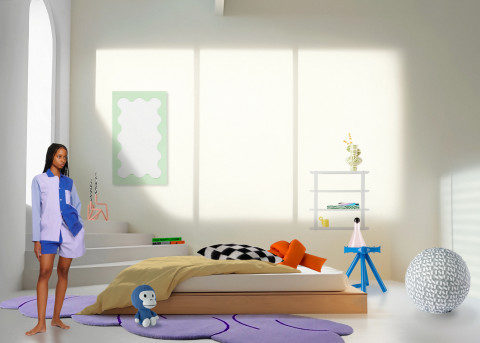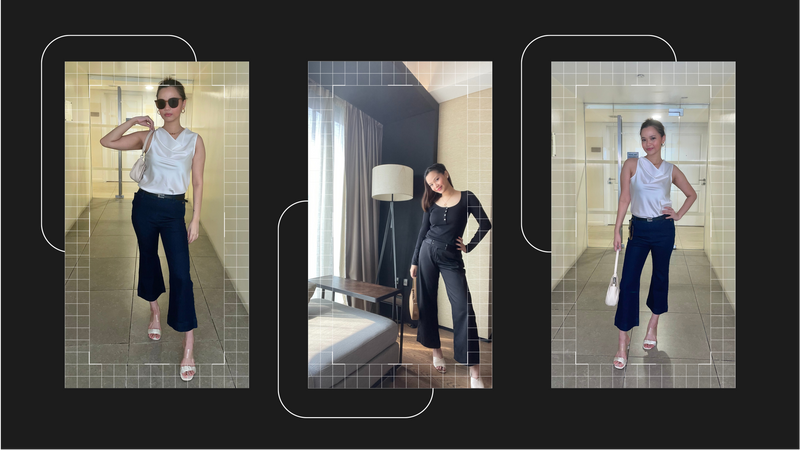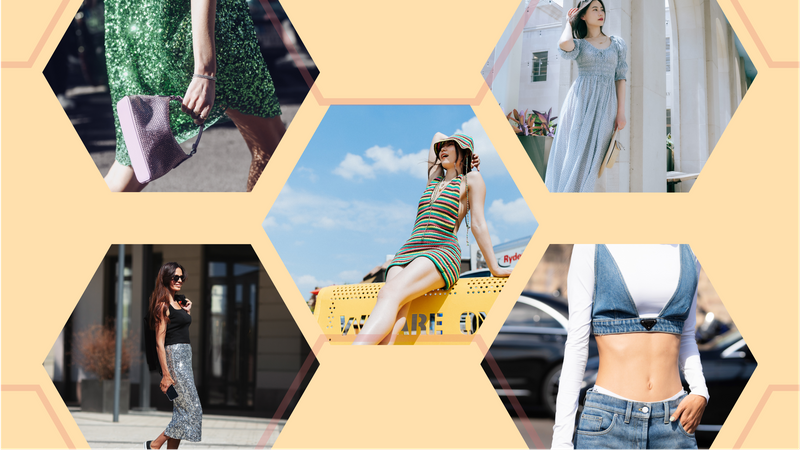Is Anybody Home?
How to curate a beautifully lived-in space without falling into the Instagram apartment trap.

For the design-minded among us, the urge to curate and demonstrate taste knows no bounds. In the Instagram/TikTok universe, every space in the home—whether you live in a studio apartment or a lavish architectural residence—is a chance to style and commodify. Sometimes this results in an inspiring and cozy ambience, other times it’s giving unwelcoming facsimile, plastic-liner-on-the-couch energy. “A lot of people’s spaces are beautiful, but can feel like being in a store instead of somebody’s real home where they walk around barefoot,” says Sydney Gore, digital design editor at . “We call it the ‘nobody’s home vibe,’ when you see a highly curated space that doesn’t actually look lived-in.”
Is the Rick Owens Hedjet Helmet table lamp on your dresser? Is your toilet paper holder from the MoMA Design Store? Are you saving up for a USM credenza? Have you considered spending an entire month’s rent on an authentic vintage Noguchi Akari pendant? Is building a plywood chair on your summer to-do list? Whether your interior style skews cottagecore, MCM retro, postmodern, school of Rick Owens or anything in between, how does one avoid ending up with a home that looks like it was completely styled by the algorithm? Viral videos like this suggest that the hottest design trend right now is actually design.But why all of our objects bring us joy? Take the oft-overlooked Monobloc, now available covered in lime green faux fur by Botter. Or the still-cultish AnZa concrete espresso maker. Or San Diego–based designer Nicholas Bijan Pourfard’s hand-thrown ceramic lamp, a more grounded take on the internet’s fading favorite Murano mushroom lamp. In 2023, form and function are frenemies. No rules means new shapes (see: the squiggle epidemic), funny fruit bowls, and a new definition of what “just makes sense,” as aptly illustrated by TikTok user Eric Jess and summarized by the top-rated comment: “Apartment by SSENSE™.”
Playing with materiality and functionality helps us continue to push the limits, but the same new trend anatomy we’ve seen develop in fashion has taken hold of interior and object design, too, oftentimes resulting in an overall culture of sameness, trend hysteria, and fatigue. Instagram has a way of making it seem like everyone has a Togo or a Mario Bellini couch, a Kartell Componibili, Vitsœ shelving, and a rare Gaetano Pesce chair. Fast furniture dupes inspired by some of these popular designs are proliferating on the market due, in part, to the inaccessibility of the original thing. “We try to find the originator of a style, rather than the derivatives,” said Lori Legaspi Moores, VP of Everything Else™ at SSENSE on buying home goods in this rapid-fire trend climate. “Traveling makes a huge difference because we can discover new artisans. It also helps us understand the scale, texture, and feeling of a piece which is super important,” she says. “Sometimes you see something and just know that it has to be on SSENSE. Within the context of SSENSE, the piece takes on a totally new life.”


The pandemic saw a meteoric rise in everything home-focused, with lockdown enticing everyone to treat their space like a new and urgent makeover project. The year 2020 also coincided with the home inspo and vintage furniture reseller Instagram account boom, of which there are now many, from favorites like Domicile File to Bruises Gallery. “A lot of the time I’m drawn to homes or interiors that I recognise—that for one reason or another feels familiar,” says Jerald Cooper of Hood Midcentury Modern, an Instagram account turned archiving project focusing on Black modernism. “You know how T.I. would wear his hat to the side, and then your O.G. at the church, she also wear her hat to the side? There’s something about the Black aesthetic that has me thinking, if you see a building and its roof looks like that, you’ll prolly love that too. I feel like if you can see and experience yourself in your space, that is a good indicator of whether it’s too staged or trendy.”

Achieving the lived-in look means honing your own personal style. Digging for interior references in old books. Finding inspiration by visiting other people’s homes irl if you can vs. strictly on Instagram or Pinterest. Mixing secondhand items and family keepsakes with contemporary pieces. Choosing things because you love them, not only because they are trending and photogenic. “When it comes to my space I’m always considering how it makes me feel,” says Cooper. “I understand how the external is either a manifestation or prophesy of the internal. This means I choose my pieces very intentionally. When it comes to personal design principles, I really fuck with people who take care of their shit. There’s this way of ‘taking care’ and ‘caring for.’ Aunt Anna Pearl’s 100 year old desk I inherited two years ago. Grandma Lucille's salmon couch from the 50s in my studio. I’m learning to care for the things I love. All the designed things.”Gore looks at furniture and objects as investment pieces, while remaining open to evolving and experimenting. “There’s definitely more pressure now with social media and constantly sharing these glimpses into our personal lives,” she says. “You want it to be perfect.” Offline, it’s not that serious. The famous motto of lauded German designer Dieter Rams, champion of the functionalist school of interior design, bears repeating: “Less, but better.” Less Instagram-focused means more of what makes you feel truly at home.



